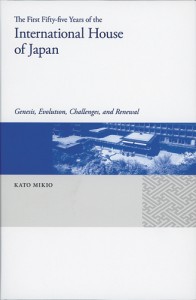Starting with the encounter of Matsumoto Shigeharu and John D. Rockefeller III at a conference of the Institute of Pacific Relations in 1929 in Kyoto, this book traces how the close personal relationship and mutual trust forged and deepened between the two led in the early postwar period to the creation of a unique institution devoted to promoting international understanding through cultural exchange, the International House of Japan. From the vantage point of having witnessed the many ups and downs of the House since the late 1950s, the author, Kato Mikio, former executive director of the House, gives an interesting and detailed inside account of its development over the next five decades, including the challenges it has faced and the leadership that turned them into new opportunities and institutional renewal. As the author himself states, the book is based upon personal memories, reflections and interpretations, with additional archival and documentary research; it is not intended, nor can it claim to be, an official history of the House. The author’s intention is to shed a light on the individuals whose devotion and able leadership played a critical role in shaping the formative years of the House, as he believes that looking backward and reminding ourselves of the original mission of the House, whose activities have grown far beyond Japanese-American bilateral relations, the area of primary concern of the founders, will be helpful in revitalizing its work in the new age of globalization.

